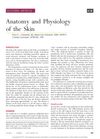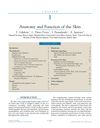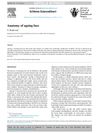Search
forProducts matching "anatomy"
Tracking 2 products like 976 Bare Anatomy Anti-Hair Fall Shampoo | Provides 5X Hair Fall Control Suitable for All Hair Types | Enriched with Adenosine and Peptides | 250 ml and 977 Bare Anatomy Volumizing Shampoo | Volume For Upto 24 Hrs | Strong & Bouncy Hair | Volume Shampoo for Thin Hair | Paraben & Sulphate Free | Women & Men | 8.4 Ounce from by companies like Amazon. View all 2 products »Learn
1 / 1 resultsResearch
5 / 1000+ results
research Anatomy and Physiology of the Skin
The skin's layers protect, sense, and regulate the body's internal balance, but can be prone to cancer.

research Anatomy and Function of the Skin
The skin is the largest organ, protecting the body, regulating temperature, and producing hormones.

research Anatomy of the Ageing Face
The document concludes that understanding the anatomical changes of the ageing face is important for effective rejuvenation treatments.
research Anatomy and Physiology of the Skin
The skin is essential for protection, temperature control, and immune defense.
research Anatomy of the Jawline, Neck, and Perioral Area with Clinical Correlations
New cosmetic procedures effectively rejuvenate the lower face with minimal recovery time.
Community Join
5 / 49 resultscommunity Microneedling, some people seem to permanently lost their hair. Confused
Microneedling can aid hair regrowth but poses risks like permanent hair loss if not done properly. Combining it with minoxidil, finasteride, and tretinoin, while ensuring proper sterilization and technique, is crucial for safety and effectiveness.
community How to Switch from Finasteride to Dutasteride according to literature.
Switching from finasteride to dutasteride involves gradually increasing dutasteride while decreasing finasteride. Studies show dutasteride 0.5 mg daily can improve hair density in men unresponsive to finasteride.
community New Study: PP405, developed by Pelage Pharmaceuticals, can reactivate dormant hair follicle stem cells and stimulate natural hair growth by 20%
PP405, developed by Pelage Pharmaceuticals, can reactivate dormant hair follicle stem cells and increase hair growth by 20% in eight weeks, unlike minoxidil or finasteride. However, skepticism remains about its effectiveness and availability, with concerns about funding and the timeline for broader access.
community Possible natural pp405 solution
Rotenone, a natural plant extract, may promote hair growth by increasing LDH activity and blocking MPC in the scalp, but it carries risks due to its toxicity. The suggested formulation includes Barbasco extract, DMSO, propylene glycol or PEG-400, ethanol, and a carrier oil.
community My hair loss journey and routine.
The user successfully managed hair loss using Finasteride, Minoxidil, Ketoconazole shampoo, and a hair mask, experiencing significant hair growth and improved density. They attribute their success to consistency, improved nutrition, and a dedicated routine.